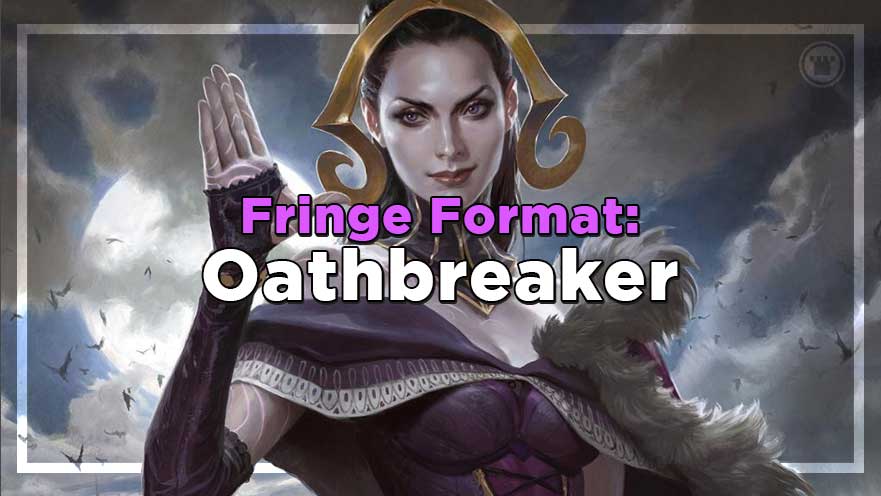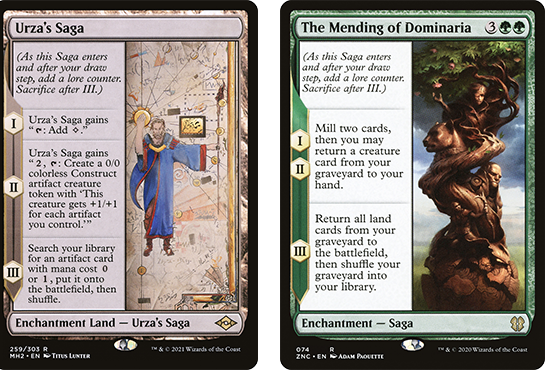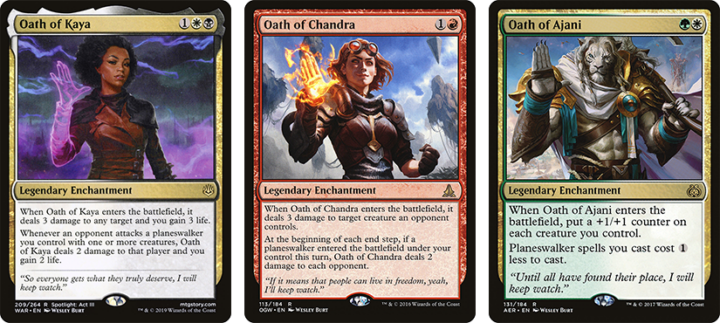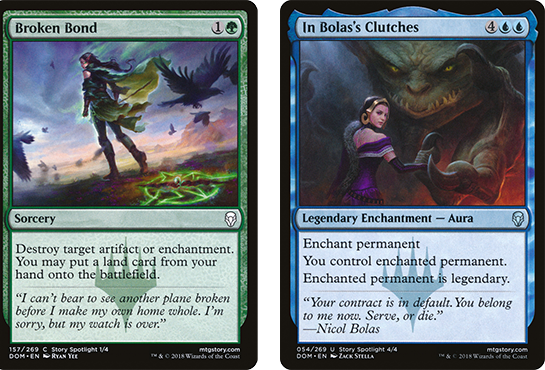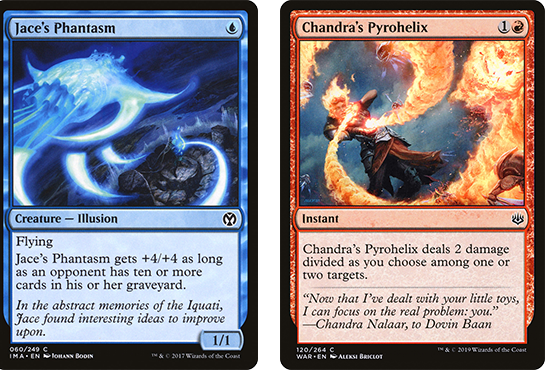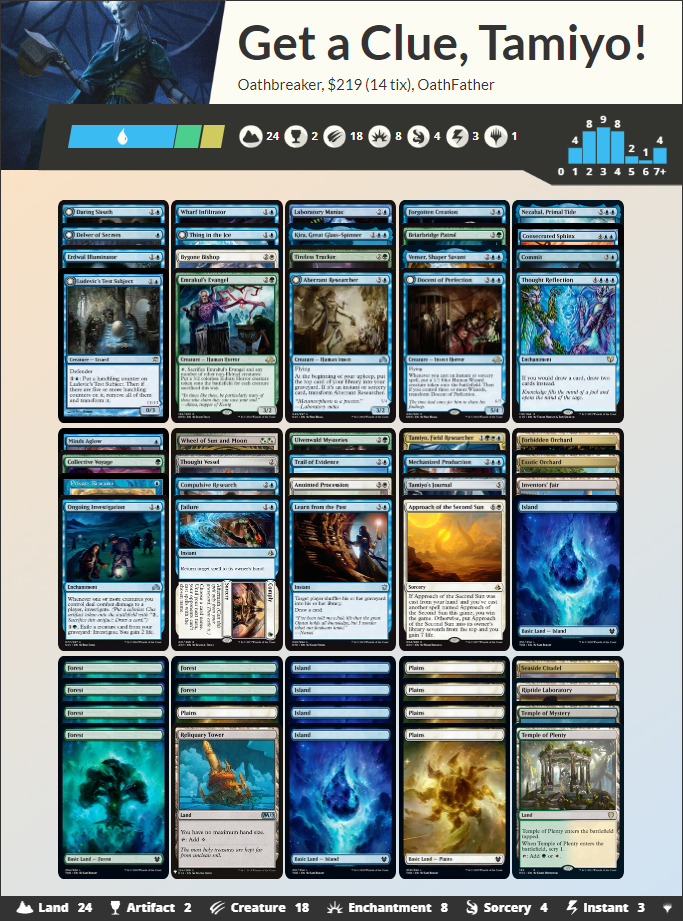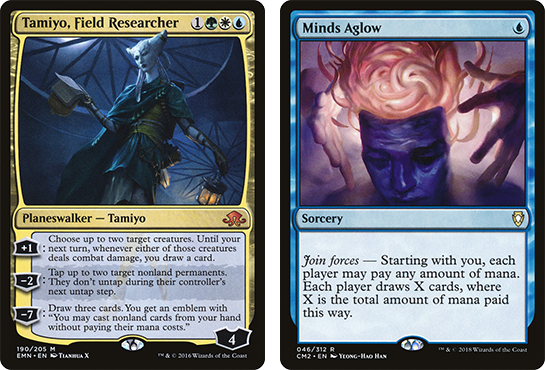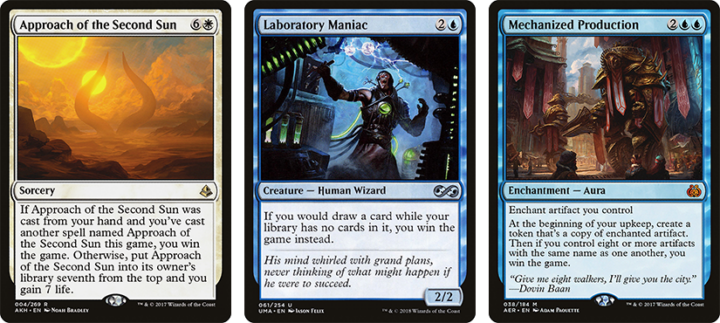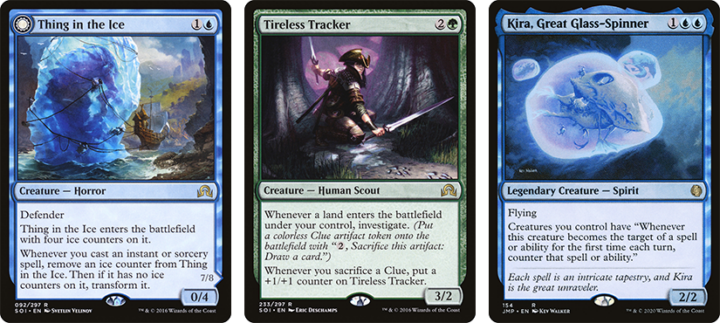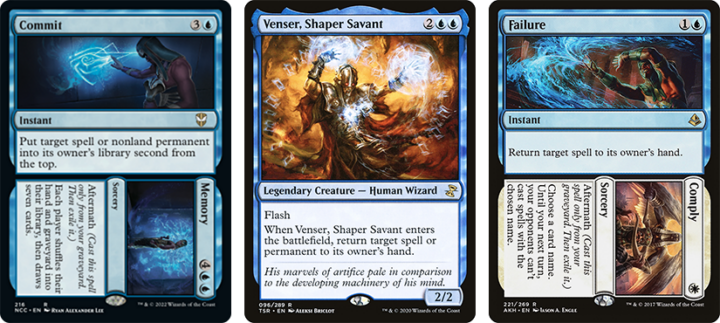In Fringe Format, Chris looks at a lesser-known way to play Magic! Oathbreaker is a singleton format like EDH, but with a few key twists!
Oathbreaker! A format that was briefly all the rage when it burst onto the scene several years ago, and still exists today, just maybe a little more in the shadow of other singleton formats like EDH and Canadian Highlander. Oathbreaker does present a very different experience and deckbuilding challenge from those formats, so let’s look at where it came from and how it works.
The Rules for Breaking an Oath
Oathbreaker is, as mentioned above, a singleton format – other than basic lands, you can only have one copy of any given card in your deck. Unlike most other singleton formats, this one is 60-card decks, rather than 100. You start with 20 life, fitting in with other 60-card formats. And your deck must be built in your Oathbreakers color identity. But what is an Oathbreaker?
Your Oathbreaker is any planeswalker, and it functions much like a Commander – it starts the game in the command zone, can be cast from there, can be put there if it would go to any other zone from the battlefield, and costs an additional two mana to cast for each time it has been previously cast from the command zone. If you’ve ever played Commander, that’s easy enough to understand.
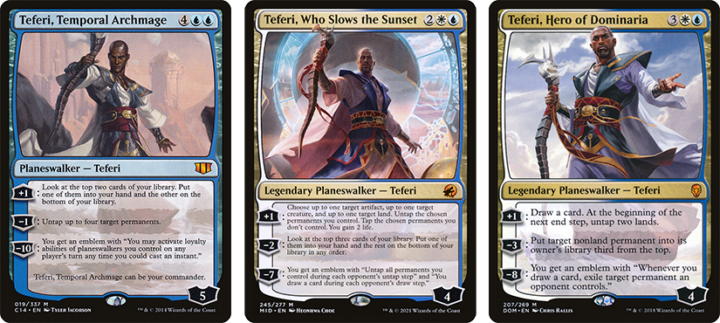
All viable Oathbreakers
But! Each Oathbreaker also gets a signature spell. A signature spell is any instant or sorcery that falls within your Oathbreaker’s color identity. It also starts the game in the command zone – for those keeping track this means that your library will start each game with 58 cards. Your signature spell can only be cast if your Oathbreaker is on the battlefield, and if it would go anywhere else but the stack (to the graveyard after it resolves or is countered, if it gets returned to your hand with something like remand, exiled, or put back in your library), it instead returns to the command zone. You may then cast it again, following the “commander tax” rule – it costs two more for each time it has previously been cast from the command zone.

All viable Signature Spells
The card pool from which decks can be built is vast. The format uses the Vintage card pool and has its own banned list. Much like Commander, decks can built to varying power and budget levels.
Always having access to a commander in EDH is already a powerful effect; always having access to a planeswalker and conditional access to a spell of your choosing can be bonkers. This is certainly a novel twist both on Commander and other singleton formats. So how did it come to be?
The Origins of Oathbreaking
Oathbreaker was invented and developed by several folks over at weirdcards.org, a charitable organization that runs events that benefit various causes and runs the Magikids charity. I fully endorse going and checking them out, they do very good work. The thematic idea for Oathbreaker came from two places: the underpinnings of old-school Magic lore, and the more recent Gatewatch.
Old-school Planeswalkers, up to and including Time Spiral (Pre-Mending for you Vorthoses out there), were god-like entities, bending reality to their will. In the lore, Players were themselves planeswalkers, battling each other using spells and mana they had encountered in their travels throughout the multiverse. This version of a Planeswalker was far more powerful than the planeswalkers we know today, and Oathbreaker is looking to get at that feeling of power – you might be able to temporarily set one of these planeswalkers back but defeating them forever is a tall order.
Much later in Magic lore came the Gatewatch, a group of planeswalkers who banded together to take on large threats to the multiverse. With them came a Oath cards, a cycle of legendary enchantments that represented each planeswalkers commitment to the cause. Almost as quickly came some of these oaths being broken in the story, with various characters either leaving or betraying the gatewatch. This seemed like a good enough thematic pretense for having these planeswalkers battle each other, and so the name Oathbreaker was born.
The idea of the signature spell, meanwhile, comes from nearly all fantasy fiction. Magic users in Magic and elsewhere usually have a go-to set of spells that they rely on. Chandra uses fire magic, Jace uses illusions, and so on. Having access to a signature spell helped give individual decks more of an identity, even if they shared a planeswalker as their Oathbreaker, and helped mimic that heightened power level.
So with the theme set, thus informing some of the basics of the format, what was left was figuring out the practical details that would help the format find its own identity. Originally tested at higher starting life totals, 20 was decided upon for several reasons – two of the main ones being to better mimic more competitive 60-card formats, and because planeswalkers inherently end up soaking up a lot of damage. Setting the life total at 20 opened more aggressive strategies, and thus diversified that gameplay of the format.
How to Break an Oath
Much like Commander, how to go about building an Oathbreaker deck is a tricky question to answer, as decks can be built for different power levels, for different strategies, and at various budget levels. Just as an example for us to break down however, let’s take a look at the pet deck of one of the format’s creators:
Looking at the deck at a glance, one can see that it isn’t built to be very expensive, and that this version of the deck hasn’t been updated in a few years. Keeping that in mind, let’s go section by section.
Oathbreaker & Signature Spell
The deck is headed up by Tamiyo, Field Researcher. She lets your evasive creatures draw cards and excels in stalling out threats and other problems, eventually (if she can survive until her ultimate ability is ready) giving you an emblem of Omniscience.
Minds Aglow is pure card draw, but both for you and your opponents. Join Forces lets you work around the command zone tax of casting the spells multiple times over the course of the game. I mean, since it’s fair, your opponents will join in for some extra cards, right? No way is your deck built to better take advantage of the extra cards, right?
Win Conditions
Approach of the Second Sun and Laboratory Maniac are both huge fans of drawing a bunch of extra cards. Once you play either of them, the cat’s pretty much out of the bag, and it’s unlikely other folks are going to chip in on Minds Aglow. But Minds Aglow can still set you up well, especially for Approach.
Mechanized Production is also a card in the deck that just says “you win the game,” although it seems a little bit of an odd inclusion for a deck that only plays one non-legendary artifact in the deck. But this a Tamiyo theme deck, specifically the version of Tamiyo that comes from the set where Investigate and Clues were a thing. A good chunk of the deck is dedicated to manufacturing as many Clues as possible, making a Mechanized Production win fully possible.
The Rest
This deck is incredibly focused on drawing cards and creating clues, while still fitting into a Tamiyo-themed Shadows Over Innistrad/Eldritch Moon-era deck. Creature-wise, Thing in the Ice and Ludevic’s Test Subject provide (eventually) beefy threats, alongside all-star Tireless Tracker. Kira, Great Glas-Spinner fits right in as a spirit that also protects all your other creatures against targeted removal. Venser, Shaper Savant might seem like an odd fit at first, until you realize that he fits right in with the rest of the kind of countermagic this deck uses.
Every piece of countermagic in the deck (unless you count Kira) doesn’t actually say “counter target spell.” Venser and Failure return the spells to their owner’s hands, while Commit tucks them away in the library. This lets you effectively counter anything, even delaying spells that normally can’t be countered. The back half of the two Aftermath cards let you further delay those spells, at which point you’ll have likely drawn enough other resources to make those spells irrelevant. Every other Instant, Sorcery, Artifact, and Enchantment in the deck is focused on drawing cards, recycling graveyards, or creating clues (Anointed Procession makes the clue production truly out of hand).
The 60-card nature of the format makes for more focused decks like this – in EDH you might have more subthemes and generic “good” cards and interaction, but Oathbreaker makes you hone down to what you really want to accomplish.
Oathbreaker is truly unique among the Singleton formats. While at first the Planeswalker restriction may seem constrictive, the smaller deck size ends up encouraging more deck diversity, even if there are fewer options for the cards that lead your deck. Signature spells also help give decks their own identity, and allow for some very individualized builds. If you’re looking for a change of pace, you might want to consider breaking some oaths.

Chris is the Marketing Communications Coordinator (and editor of the blog) at Card Kingdom. He would like to apologize to his son for not holding onto more cards from when he first started playing, as that likely would have paid for college. He enjoys pretty much all formats of Magic, but usually ends up playing decks that make other people dislike playing those formats with him.

